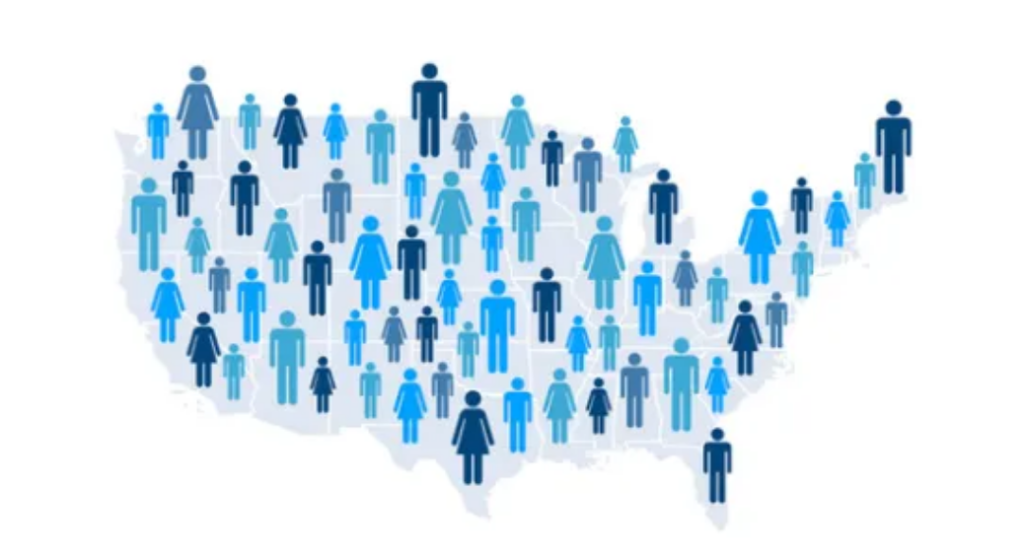SEPTEMBER, 2021
In order to provide the safest environment possible and assure a robust and entertaining experience, L’ATTITUDE 2021 announced it will require onsite COVID-19 rapid testing – provided at no charge – for all employees, speakers, and attendees.
L’ATTITUDE says this protocol will be in addition to previously announced policies that include:
- All staff and volunteers must provide proof of vaccination
- All attendees, staff and volunteers must wear masks for all indoor events and activities
- Social distancing will be enforced as needed
- Masks and hand sanitizers will be provided on site
Any attendee who has proof of a negative test within 72 hours of arrival at L’ATTITUDE can forego the onsite rapid test.
L’ATTITUDE 2021 is presented by Bank of America and is scheduled September 29 – October 2 at the Grand Hyatt in San Diego. L’ATTITUDE is the largest national event in our country focused on the New Mainstream Economy. Now in its fourth year, this annual event has become one of the most important platforms for catalyzing the continued dramatic economic growth of the U.S. Latino cohort.
This event is a “who’s who” of Latino and non-Latino business leaders, entrepreneurs, investors, and influencers, and has been described as the “not-to-miss” business experience of 2021. LATTITUDE is regarded as the leading resource for learning what business owners and business professionals need to know to navigate America’s New Mainstream Economy and enhance their own personal financial potential.
Complete details and online registration are available at www.lattitude.net.
New Census Details Show
Latinos Leading Growth
The first detailed results of the 2020 census were released last month and show a nation growing in diversity with an Anglo-American population that is shrinking for the first time in its history, dropping 2.6% from 2010 to 2020.
At the same time, the U.S. Latino population grew 23%, accounting for over half of the country’s total growth and making U.S. Latinos the fastest-growing demographic in America. The Census data show a Latino population of over 63 million, a number that officials admit is undercounted because many Latinos chose not to participate in the census out of fear regarding previous administration policies.
In total, the nation’s population grew just 7.4% during the decade, the second slowest on record for a decennial census. Only the 1930s—the era of the Great Depression—saw slower growth.
The declining Anglo total reflects decades of falling birthrates, rising death rates, and minimal immigration. The nation’s children are even more diverse than the U.S. as a whole, with 47% now nonwhite, up from 35% in 2010. Of all children born since 2010, U.S. Latinos account for nearly 1 in 3.
Further emphasizing the demographic reality of America, the U.S. Latino total population is now larger than the Asian and Black populations combined.
Immigration Is Getting Congressional Attention
The Bureau of Labor Statistics released July job data that showed the number of persons not in the labor force who currently want a job was at 6.5 million, basically unchanged compared to the previous month. At the same time, the number of unfilled jobs in America was reported to exceed 10 million. That gap between unfilled jobs and available workers should be sending an alarm to policy-makers regarding U.S. immigration, as it is the only source of new workers for our country.
That is why the American Business Immigration Commission (ABIC) was pleased to announce recently that a Senate Budget Resolution passed 50-49 along party lines with immigration included to legalize dreamers, farm workers, immigrants with temporary protected status, and essential workers.
That is not final as the next steps include negotiations over the actual language, and a parliamentarian ruling that is expected sometime in September.
ABIC noted that 21 ABIC Republican Business and Political leaders sent a letter to President Biden and congressional leaders, calling for immigration to be included in the Budget resolution to grow the GDP, create jobs, and raise the wage floor for all American workers. They wrote “we prefer bipartisanship, but if reconciliation is moving forward, we urge you to include immigration. Good for the economy. Good for families.”
SIDEBAR: Immigration and Small Business
While much of corporate America continues to thrive amidst the realities of Covid, most small businesses are not thriving. The National Federation of Independent Business (NFIB) found in their July jobs survey that 63% of small businesses were hiring new workers, but that 89% of those businesses said they could find only a few, or no, qualified applicants. This reinforces the need to expand our country’s shrinking labor force through strategic immigration policies.
For many small businesses, in order to hire employees in a highly competitive market, especially considering the salary capabilities of large companies, they have had to increase both pay and benefits. These increased costs are hard to absorb, as passing them on to their customers can put them at a competitive disadvantage.
In summary, many small businesses find themselves at a disadvantage to larger corporations if they have to compete for scarce resources like labor.
The Story on Jobs
As noted, the Bureau of Labor Statistics released July job data. An analysis of that data provides some insights into the state of American business.
In July, 13.2 percent of employed persons teleworked because of the coronavirus pandemic, down from 14.4 percent in the prior month.
Employment in professional and business services rose by 60,000 in July.
While employment in leisure and hospitality increased by 380,000, it is still down by 1.7 million, or 10.3 percent, from its level in February 2020. Two-thirds of the jobs gained were in food services and drinking places.
Transportation and warehousing added 50,000 jobs in July and has now recovered 92.9 percent of the jobs lost during the February-April 2020 recession.
Health care employment remains down by 502,000 since February 2020.
Employment in manufacturing increased by 27,000 in July, largely in durable goods manufacturing. However, manufacturing employment as a whole is 433,000 below its February 2020 level.
Employment in information increased by 24,000 over the month, with three-quarters of the gain in motion picture and sound recording industries. Employment in information in total is down by 172,000 since February 2020.
Employment in financial activities rose by 22,000 over the month, largely in real estate and rental and leasing, but is still down by 48,000 since February 2020.
Employment in mining increased by 7,000 in July, but is 103,000 below a peak in January 2019.
Employment in retail trade changed little in July, following large increases in the prior 2 months.
In July, employment in construction and wholesale trade showed little change.
SIDEBAR: Trucking Industry Paying Signing Bonuses
The trucking industry reports a shortage of more than 60,000 drivers, worse than it was pre-pandemic. As a result, carriers are offering a variety of incentives, including sign-on bonuses, increased pay, improved equipment, and more flexible schedules in order to attract talent. As noted in AXIOS, all new drivers with Cowan Systems are automatically eligible to earn from $15,000 to $20,000 as a signing bonus. Across the industry, 15.8% of the driving-related job postings on Indeed include a signing or cash bonus.
Covid and Entrepreneurship
Compared to just prior to the pandemic, the number of new business applications is up 38%, according to the U.S. Census. According to one economist quoted in Bloomberg, most of these new start-ups will remain small and not hire workers. However, the number of applications for businesses that are in the category of likely to hire personnel and grow are also up.
It appears that most of the new applications are in the industries of retail, food, professional, scientific and technology services. There is more growth in Texas, Georgia and Florida compared to New York and California.
U.S. Latinos are the most entrepreneurial cohort in the country, having opened 80% of the net new businesses in the past decade. With U.S. Latinos already over-indexing other cohorts in some of the growing categories, it appears likely that their dominance in new business start-ups will continue. That is further reinforced by the fact that the highest growth states for small business applications are states where U.S. Latinos have accounted for a majority of the population growth.
Among the reasons for this growth in entrepreneurism might be found in a global survey conducted by Microsoft, that found 41% of the global workforce are ready to quit their jobs. When it comes to Gen Z workers, the desire to quit reaches a whopping 54%, and over 70% of employees want to work more remotely..
In 2020, 4.35 million people applied to start new businesses, which was up from 3.5 million 2019. It appears they came to the realization that they have the entrepreneurial talent and the ability to improve their situations.
U.S. Latinos Remain Optimistic
About the Future … with One Exception
In a survey of attendees of the virtual L’ATTITUDE event in September, 2020, the optimism of this cohort was obvious, even in the midst of the pandemic prior to the vaccine. 68% of them said economic opportunities in the future would get better. In addition, 87% felt optimistic or very optimistic about their personal financial status.
In a survey of 3,375 U.S. Latino adults conducted in March 2021 by Pew Research Center, most Latinos said they think the worst of the problems the country is facing from the outbreak are behind us. In addition, 54% said they expect their personal financial situation will be better a year from now.
Over the course of the pandemic, Latinos have become more optimistic about the country. About half (49%) say they are satisfied with the nation’s direction, up from June 2020, when just 20% said the same. This is the most satisfied Latinos have been with the nation’s direction since 2012, when 51% said so.
Meanwhile, Latino parents are not as optimistic about their children’s education and are concerned that the pandemic has disrupted their children’s progress in school. Three-in-four Latino parents of K-12 students say they are somewhat or very concerned that their children have fallen behind in school due to disruptions caused by the coronavirus outbreak. Parents have similar levels of concern whether their children have received online-only instruction or have had a mix of in-person and online instruction.
About three-quarters of each say they are somewhat or very concerned their child has fallen behind. Likewise, 65% of all U.S. parents of K-12 students share that view and say they are very or somewhat concerned about their children falling behind in school due to the outbreak.






